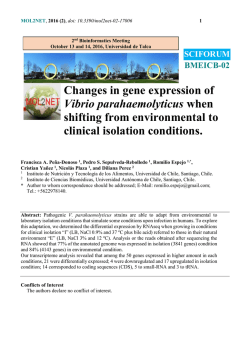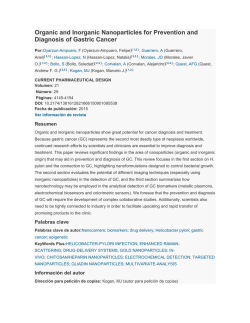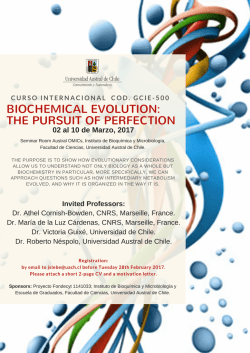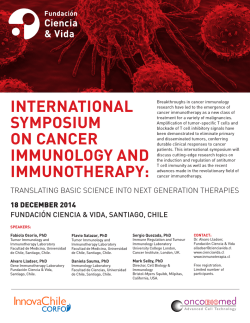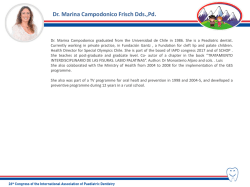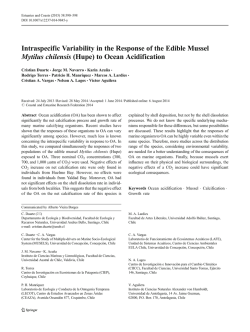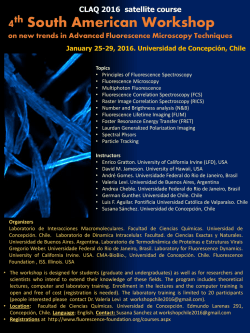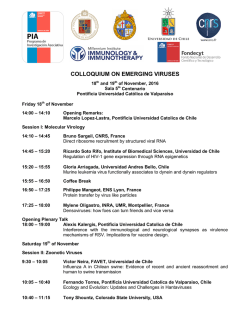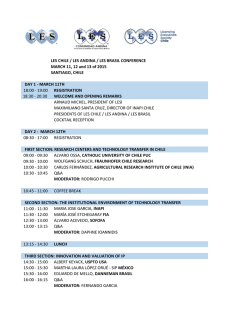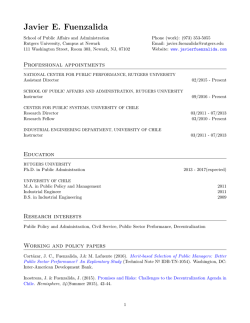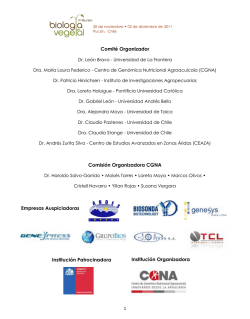
ENVIRONMENTAL IMPLICATIONS OF ADDING METAL
ENVIRONMENTAL IMPLICATIONS OF ADDING METAL NANOPARTICLES IN THE AVAILABILITY OF Cd IN AN ULTISOL: EFECT OF THE NANOPARTICLE CHEMISTRY AND INCUBATION PERIOD Nicolás Arancibia-Miranda1,2*, Karen Manquián-Cerda1, Jonathan Suazo3. 1 Facultad de Química y Biología, Universidad de Santiago de Chile, Av. B. O'Higgins, 3363, Santiago, Chile. 2 Center for the Development of Nanoscience and Nanotechnology, CEDENNA, 9170124, Santiago, Chile. 3 Departamento Ciencias Químicas, Universidad de La Frontera, Av. Francisco Salazar 01145, Casilla 54-D, Temuco, Chile * Corresponding author: [email protected] The use of phosphate fertilizers has caused a high accumulation of cadmium (Cd) in Chilean agricultural soils, which could be available to be incorporated by plants and subsequently in the food chain, causing diseases such as bone degeneration, renal dysfunction, damage to the liver, among others. Because it is a need to immobilize this metal, zeolite, activated carbon, etc. are used. Currently the application of nanoparticles (NPs) has been demonstrated for potential use in environmental engineering. Due to the small particle size, large surface area, and high in-situ reactivity. Considering these physicochemical properties this study aims to evaluate the effect of CuNPs and Ag in the availability of Cd in an Ultisol (Metrenco). The sequential extraction for Metrenco/Cd2+ system showed that this metal is preferentially associated with acidic components. After the addition of CuNPs there is a shift to the exchangeable fraction, remaining the most available for a potential incorporation to the plants. For these systems the incubation does not change the Cd2+ affinity into the fractions of the soil, not so, for the AgNPs, who produce an increase of the % of Cd2+ associated with the interchangeable fraction of 16,6 % (1 day) to 37,5 % (14 days) and 34,2 % (60 days) and in the reducible fraction (Fe/Mn oxides) of 24,5 % and 22,8 % for 1 and 14 days respectively to 33,5 % in 60 days, while in the acidic components (carbonates) it diminishes from 57,7 % in 1 day to 33,8 % and 31,0 % for 14 and 60 days respectively. These results showed that the AgNPs displace Cd2+ towards a more recalcitrant fraction on 1 day of incubation. So it is proposed the use of AgNPs as an alternative to immobilize Cd2+ in Metrenco soil when pollution has been recent. Acknowledgments: FONDECYT 11130157 and Cedenna (FB0807).
© Copyright 2024
